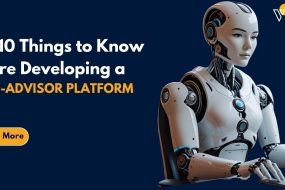
Machine learning models can utilize different types of data as inputs – from a single modality like text to multiple modalities like text, image, and audio. This difference impacts not only the complexity and performance of the models but also which situations each approach is best suited for.
Here we will explore unimodal learning which uses one data type, bimodal learning which combines two modalities, and multimodal learning which incorporates three or more modalities. We will discuss the definition, examples, and characteristics of each approach, as well as their relative advantages, limitations, and suitability for different applications.
The goal is to understand the trade-offs between these learning techniques so you can choose the right one for your specific machine-learning task based on your performance needs, available data, and computational constraints.
What is Modality in Machine Learning?
A modality refers to a specific type of data or input that a machine learning model can process. Common modalities include:
- Text (e.g., articles, social media posts)
- Audio (e.g., speech, music)
- Image (e.g., photos, videos)
- Sensor data (e.g., from IoT devices)
Understanding whether a model is unimodal, bimodal, or multimodal depends on how many and which types of these modalities it processes.
What is Unimodal Learning?
Unimodal learning refers to machine learning using only one type of data, or modality. Some examples of modalities are text, images, audio, and video. Traditional machine learning algorithms are largely unimodal – they are designed to work with only one type of input data. For example, convolution neural networks analyze image data while recurrent neural networks analyze sequential data like text.
Unimodal learning has some limitations. Models trained on a single modality cannot capture the full context and information present in real-world data, which often involves multiple modalities. In contrast, multimodal learning uses two or more modalities together. It can gain a more complete understanding by combining data from different sources. For example, recognizing an object in an image and also hearing its name in audio provides more information than either modality alone.
Examples of unimodal learning approaches (e.g., text-based learning)
Unimodal learning focuses on building machine learning models using only one type of data – text, images, audio, or video. While specialized for single data types, unimodal learning has limitations. Text-based examples include:
- Sentiment analysis classifies text as positive, negative, or neutral based on linguistic features.
- Spam filters identify unwanted emails by recognizing patterns in ham versus spam texts.
- Machine translation systems like Google Translate are trained only on text corpora in two languages.
Advantages
- Simpler models that are easier to train and optimize for a specific task.
- Higher performance on specialized tasks that only require one data modality.
- Established techniques exist for text, image, and audio analysis.
Limitations
- Cannot utilize the full context present in real-world data, which often involves multiple modalities.
- Lacks the robustness of multimodal models that combine information from different sources. Prone to higher errors since relying on a single data type.
- Cannot replicate how humans perceive and learn from multiple senses.
What is Bimodal Learning?
Bimodal learning refers to an educational approach that combines traditional in-person classroom learning with virtual or online learning. It involves using two modes of delivery – offline and online methods. The key characteristics of bimodal learning are:
- Combining classroom learning with digital resources. Students attend physical classes while also accessing online content and tools.
- Employing both synchronous and asynchronous learning. There are live virtual sessions as well as self-paced lessons and content.
- Leveraging different technologies alongside traditional textbooks. This includes tools like videos, simulations, apps, and interactive content.
- Providing face-to-face teacher and peer support as well as virtual interactions. Students get personalized assistance from instructors and classmates both in-person and online.
- Offering adaptive learning options that tailor resources based on student needs. Technology and data help customize the learning experience.
In essence, bimodal learning merges the benefits of traditional in-person instruction with the flexibility and resources of virtual learning. Students gain knowledge through a hybrid model that incorporates the strengths of offline and online delivery.
Examples of bimodal learning approaches
Bimodal learning refers to a learning approach that combines aspects of traditional classroom learning and digital online learning. The main characteristics of bimodal learning are:
- Combining formal classroom instructions with self-paced online learning materials. Students have the flexibility to learn at their own pace using digital content while still attending classes.
- Putting synchronous and asynchronous learning techniques into practice. Students get access to both pre-recorded videos and tutorials as well as live virtual sessions.
- Using a variety of technological and educational resources in addition to conventional textbooks. Online resources including simulations, applications, movies, and interactive material are included in this.
The flexibility and technology of digital learning are combined with the best aspects of conventional classroom instruction in bimodal learning.
Advantages and limitations of bimodal learning
To create machine learning models, bimodal learning combines data from two different modalities. Bimodal learning can be advantageous, but it also has certain disadvantages, including the following:
Advantages:
- Flexibility – By using online resources, students may learn at their own speed and on their own time. They may choose when and how to study more freely.
- Access to additional resources – Through the online component, students have access to a greater variety of educational resources including films, simulations, applications, and interactive content.
- Personalized learning – With the use of adaptive technology, students may access learning materials that are suited to their individual needs, interests, and needs.
- Development of technological skills – As part of their online learning, students use various tools and platforms to hone and practice their digital abilities.
Bimodal learning gives students the skills they need for the majority of occupations available today, which need some level of online cooperation and virtual communication.
Limitations:
- Technical challenges – Some students could have trouble logging in to or using online learning resources and platforms. Their schooling may be hampered by this.
- Distractions – To concentrate on online learning and stay away from distractions like social media, students require strong self-discipline and time management skills.
- Lack of interpersonal connections – The virtual component may reduce chances for in-person communication, feedback, and support from instructors and classmates.
- Resource-intensive – Developing and maintaining both offline and online curriculum components calls for extra resources when using bimodal learning.
What is Multimodal Learning?
An educational strategy known as “multimodal learning” employs a variety of modes or channels to disseminate information and promote learning. It requires using several senses, including sight, hearing, touch, and others. The key characteristics of multimodal learning are:
- Combines many media: Speech, music, and sound effects are combined with visual formats including images, graphs, and demonstrations.
- Involves a variety of sensory systems: Students are exposed to information through their visual, aural, and kinesthetic senses as they walk around, participate in interactive simulations, and engage in hands-on activities.
- Uses technology: To give learners visual, aural, and tactile experiences, tools like videos, interactive presentations, applications, and virtual reality are employed.
- Individualizes the learning process: Learners can select and combine the modes that work best for them based on their learning preferences and needs.
- Improves comprehension and retention: By absorbing information through various senses simultaneously, learners tend to understand and remember concepts better.
Multimodal learning engages learners through visual, auditory, and kinesthetic modes to provide a rich and individualized learning experience that potentially enhances understanding and retention of knowledge.
Examples of multimodal learning approaches
Here are some examples of multimodal learning approaches:
- Using text with visuals like diagrams, charts, and graphs – Learners read textual explanations while also seeing visual representations of the concepts to aid comprehension and retention.
- Adding interactive elements like simulations and animations – Learners can interact with visual simulations that bring dry theoretical concepts to life. This helps solidify understanding through experience.
- Incorporating audio in the form of narration, spoken explanations, and audio clips – Learners hear audio explanations of the concepts in addition to reading text and seeing visuals. This taps into the auditory learning channel.
- Employing video lessons with visuals and audio narration – Learners watch short video lessons that combine on-screen text, static, and moving images with audio narration. This stimulates both the visual and auditory senses.
- Providing hands-on activities and physical manipulatives – Learners have opportunities for tactile experiences with concrete materials that represent abstract ideas. This engages the kinesthetic learning mode.
Advantages and limitations of multimodal learning
Multimodal learning refers to instruction that engages learners through multiple sensory modes such as visual, auditory, and kinesthetic. By incorporating visual aids, audio, and hands-on activities, multimodal teaching aims to improve comprehension and retention.
Advantages of multimodal learning:
- Better comprehension and memory: Learners understand and recall concepts more effectively when information is presented through different sensory modes that stimulate the visual, auditory, and tactile centers in the brain.
- Catering to different learning styles: Visual, auditory, and kinesthetic learners can all benefit when instruction incorporates visual aids, heard explanations, and hands-on activities.
- Increased motivation and interest: Interactive simulations, experiments, and games make learning more engaging and enjoyable for students.
Limitations of multimodal learning:
- Overloaded working memory: Too much visual, auditory, and kinesthetic input simultaneously can exceed the limited capacity of working memory and make it difficult for learners to process information effectively.
- Difficulty in implementation: It can be challenging for teachers to thoughtfully integrate multiple modes of instruction into their lessons to achieve optimal benefits.
- Increased resource demands: Multimodal teaching often requires more resources like technological tools, manipulative and hands-on materials.
Quick Comparison Table
| Feature | Unimodal | Bimodal | Multimodal |
|---|---|---|---|
| Modalities | One | Two | Three or more |
| Complexity | Low | Medium | High |
| Contextual Understanding | Limited | Improved | High |
| Examples | Text classification | Video analysis | Autonomous vehicles |
| Use Cases | Simple NLP or CV tasks | Audio-visual tasks | Real-world, complex systems |
Factors to Consider When Choosing a Modality
Here are some key factors to consider when choosing a modality for machine learning:
- Availability of data – Does enough high-quality data exist in that modality for your task? Data availability often dictates which modalities are feasible.
- Relevance to task – How relevant is that modality to achieving your performance goals? Modalities that provide the most complementary information for your task are best.
- Encoding complexity – How difficult will it be to encode and represent data from that modality? Some modalities like text have simpler encodings while others like video are more complex.
- Fusion complexity – How easy will it be to fuse that modality with others? Adding more complex modalities increases the difficulty of fusion.
- Performance gains – What potential increase in performance could that modality provide? Modalities that could significantly improve accuracy are worth the added complexity.
A balance between these factors will help you determine the most effective modality or combination of modalities for your specific application.
Conclusion
There are many ways to learn effectively. Unimodal learning relies solely on one mode like listening. Bimodal combines two modes like audio and visual. Multimodal employs multiple modes including audio, visual, tactile, and kinesthetic. There is no single best approach. The key is choosing the method that works best for you based on your learning preferences, the material, and the desired outcome. Experiment with unimodal, bimodal, and multimodal techniques to see which enhances comprehension, retention, and application of knowledge for you. With practice and experience, you can become a strategic, self-aware learner using all three approaches to gain the maximum benefit from your learning journey.











